Editor’s Note: This post is written by a member of LTV’s sponsored content team, The Leisure Explorers. Do you own a Leisure Travel Van and enjoy writing? Learn more about joining the team.
This is the tale of two canyons–one very narrow and one very grand. Both are exceptional places to visit. In October of 2023, we were fortunate to have an LTV Southwest Roadrunners rally in Page, Arizona. While the town might be nice, the draw for us was to see Antelope Canyon–the narrow one, and for our return trip to California, another canyon was feasible to visit, this one a Grand Canyon. While very different, they’re both phenomenal to see, and we enjoyed our 2023 Canyon Adventure.
Antelope Canyon
You may have never heard of Antelope Canyon, but chances are you’ve seen pictures of it. It’s called a “slot” canyon, which means it’s essentially a long, narrow slot in the earth caused by erosion. Unlike other canyons that you mostly see from above, a slot canyon’s beauty is from walking on the bottom and looking up. While there are over a thousand slot canyons in southwest Utah and northern Arizona, Antelope Canyon is one of the more famous ones. It’s located on Navajo Nation land, with Page, Arizona, the nearest town. For our rally with the Southwest Roadrunners, we stayed at the Glen Canyon National Recreation Area on the shores of Lake Powell, specifically at the Wahweap Campground. This was a beautiful campground with plenty of nice spots. Some had shared pads, while others were separate. As a rally group, we were (mostly) all in Loop D, and we were very lucky and had spot number one, giving us a great view of the lake.
On the way into Page, we stopped at a non-canyon overlook. Horseshoe Bend is a famous view of the Colorado River where it makes, well, a big bend. Chances are you’ve seen pictures of this place.
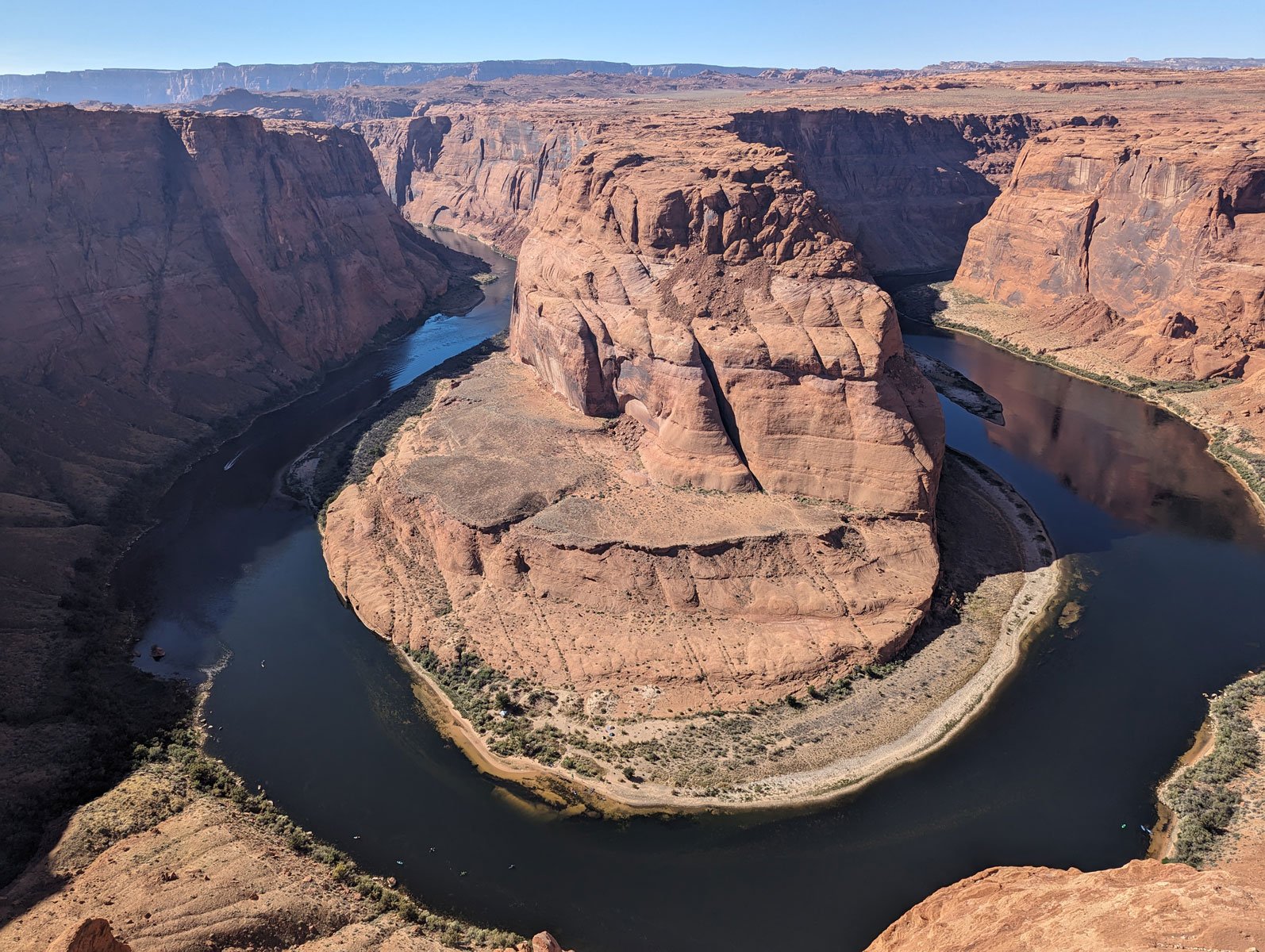
The overlook is on Navajo Nation land, so you must pay to park and then walk a half mile to the viewpoint. It’s a relatively easy walk, at least in October. I imagine in the summer it could be very hot, so they recommend bringing water for the roundtrip. If you’re in the area or just passing through, it’s well worth the stop.
But the main draw to the area, and the reason we went, was to visit Antelope Canyon. There are two canyons–Upper Antelope and Lower Antelope. From what we’ve seen and the people we’ve talked to, both are fantastic, although we only visited the Upper Canyon. The Lower Canyon has ladders and stairs, which is more challenging. The Upper Canyon is more accessible, with a flat walk from the entrance through the canyon and only moderate stairs to get back up to the top for the walk back to the vehicle you came in, which won’t be your vehicle. There are two reasons for this. The first is because the two Antelope Canyons are on Navajo Nation land, and the only way to visit is to book a guided tour. The second is to get to the canyon, which requires a 10-minute drive on unpaved “roads” (essentially dry river beds). As nice as our LTV is, it is not designed for that kind of off-roading!
We made our reservations months before the trip, and booking early is highly recommended, especially if you’re coming during a popular tourist time. These tours aren’t cheap; our tour was around $100 per person. There are many tour providers, so you can shop around and read reviews. We used Antelope Canyon Tours and had a very good guide. We met up in town (Page), where many tour companies are located. Because we don’t have a toad, we had to drive our LTV to the location (a strip mall), but there was plenty of parking. Because we knew we’d be leaving the vehicle parked for a couple of hours, this was one of the few trips we didn’t bring our dogs. Multiple groups met at the shop, and we loaded up for the 20-minute drive to the Upper Canyon. We were essentially all in the back of a large pickup truck as we drove on city roads for 10 minutes and then went off-roading for the final half of the journey. It was bouncy and pretty dusty, so be warned of that. Some outfits bring their people out in enclosed vehicles, which might be nicer in hotter months—something to consider whenever you book.
There were other tour companies at the same time, and quite a large group of people gathered up to go into the canyon opening.
At first, this seemed like it would be a nightmare to fit everyone inside and would take away from the ambiance of it all. But all tours are guided, and the timing is very strict. Everyone was in groups of around 10-15 people, each with a guide, and we moved through the canyon in these groups, allowing the group in front to move on before we entered each area. This allowed us to experience the beauty of the place without hordes of people in our view (and our pictures), and wow, is it beautiful!
Our guide was terrific, and she kept us on schedule. She would also point out various viewpoints and images to “see” in the formations, such as the Blue Lady, where the outline of the sky looks like the profile of a lady in a dress. Our guide also knew the best places to have us pose to get the all-important “we were here” photos.
As you go around each corner, there is another magnificent view. The Upper Canyon is like an upside-down V, with the narrow part at the top and the wider part at the bottom (where you’re walking). The Lower Canyon is the reverse, with the narrow part where you walk. In our case, the narrow top allowed enough light to come through for dramatic shadows. During the late spring to early autumn timeframe, at the right time of day, beams of light shine down in certain areas. While we didn’t see any (too late in the year), the canyon didn’t disappoint.
Although we didn’t time the actual walk-through of the canyon, and you’re stopping and starting as the various groups move through, it did seem like it was over too soon. The views were simply stunning. Hilary pointed out that in many places where we go, the hype often seems to make the experience less. Not here. This was even more spectacular than pictures can show. At the canyon’s end, you have to climb up some metal stairs, then it’s a short walk back to the parking area, and then another 20-minute drive back to town. It took exactly 2 hours (I said they were pretty strict on timing). Then, we took a short drive back to the campsite in the LTV, where we stopped to enjoy the view of Lake Powell.
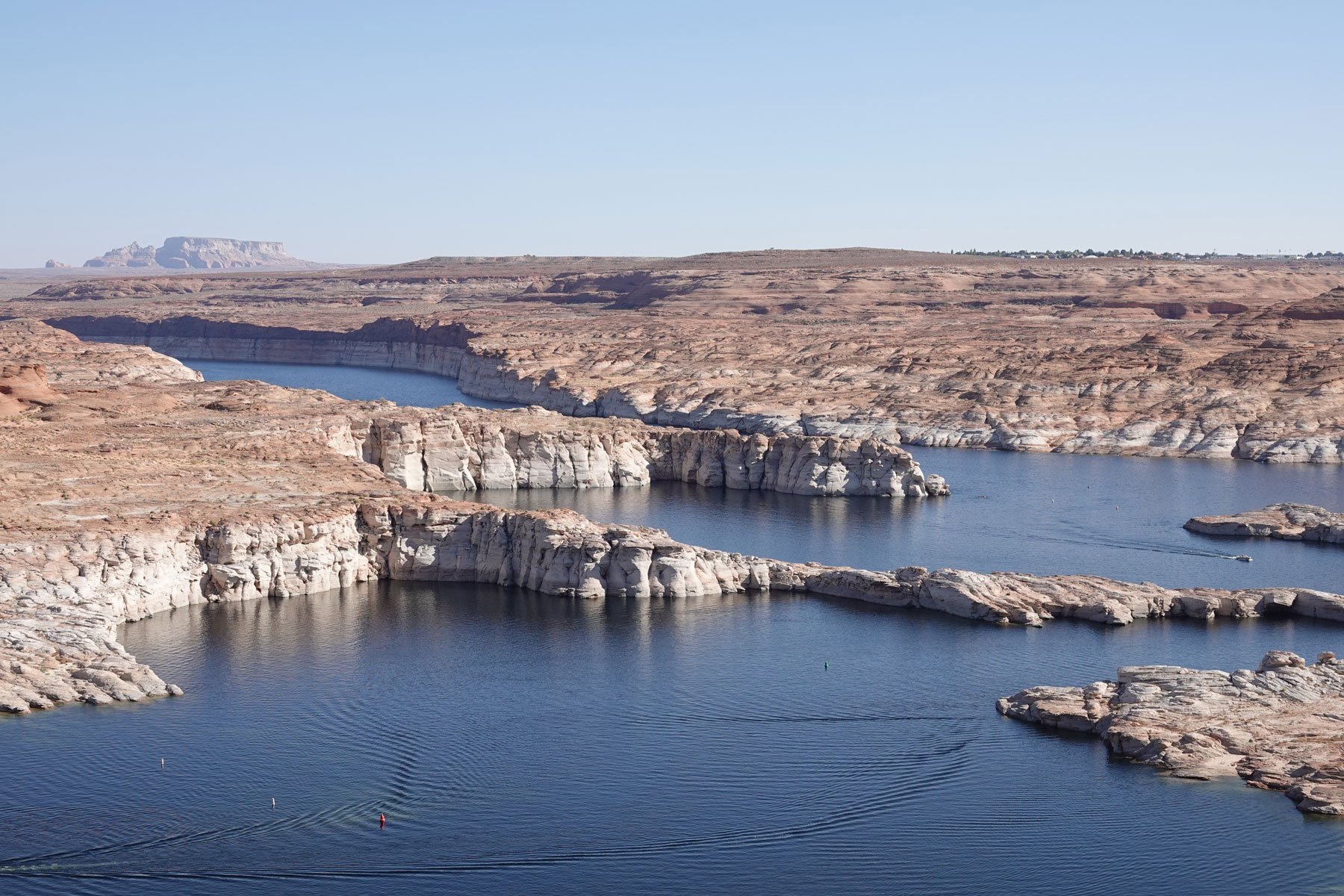
That night, we were treated to a wonderous night sky, with the Milky Way visible to the naked eye. I used the astrophotography mode on my phone to get some awesome pics before heading off to bed.
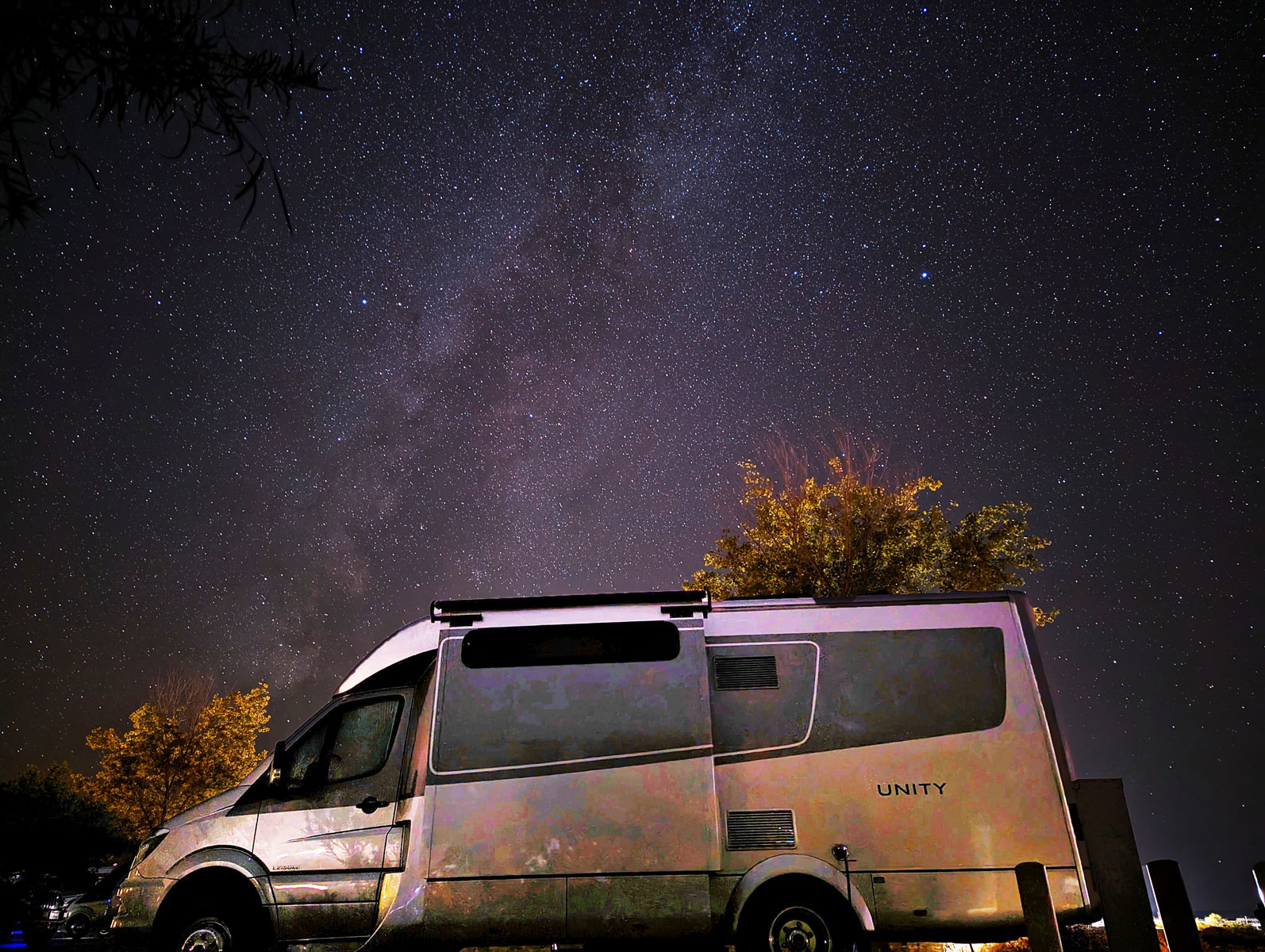
Grand Canyon
The next day, we left early for a two-hour drive to the east entrance of the Grand Canyon National Park. We read that the East Entrance is the less crowded one, and also, being off-season and mid-week, we had no delay getting into the park. Our first stop was the Desert View Watchtower, where you walk up to get that first view of the Grand Canyon.
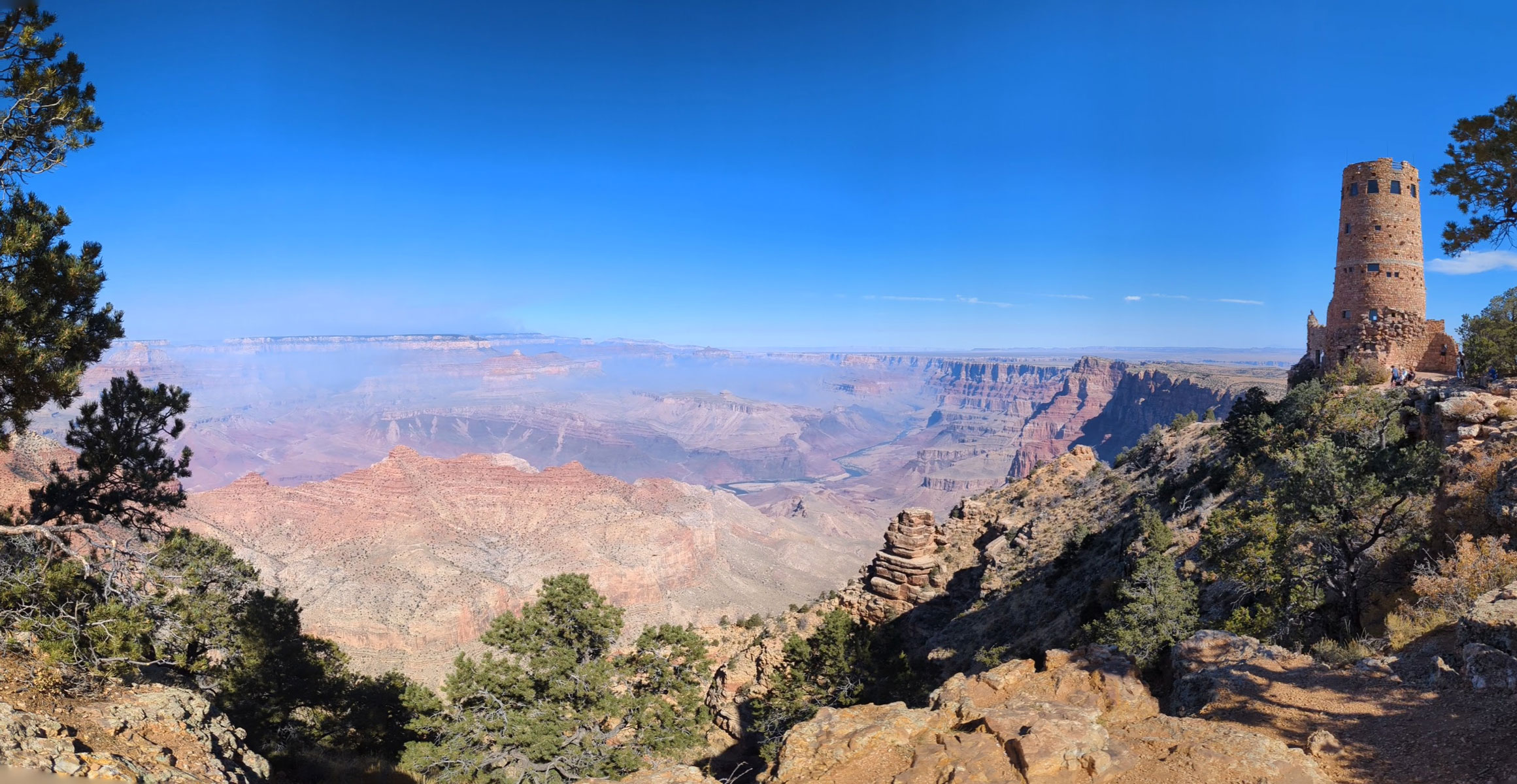
I think you never forget your first view of the Grand Canyon. We’ve all seen pictures, and they look amazing, but to see them for real for the first time takes your breath away. This wasn’t our first visit to the Grand Canyon, so instead of that initial “WOW!!!” we just had a more muted “wow!!”. Every direction you look is a sight that truly boggles the mind. After the requisite amount of time to take tons of pictures (and do a little shopping at the gift shop), we returned to the LTV and headed towards the main part of the south rim area. This route on Desert View Drive has plenty of views and overlooks. As it was lunchtime, we took advantage of one pull-out to get our chairs, make lunch, and enjoy a unique view.
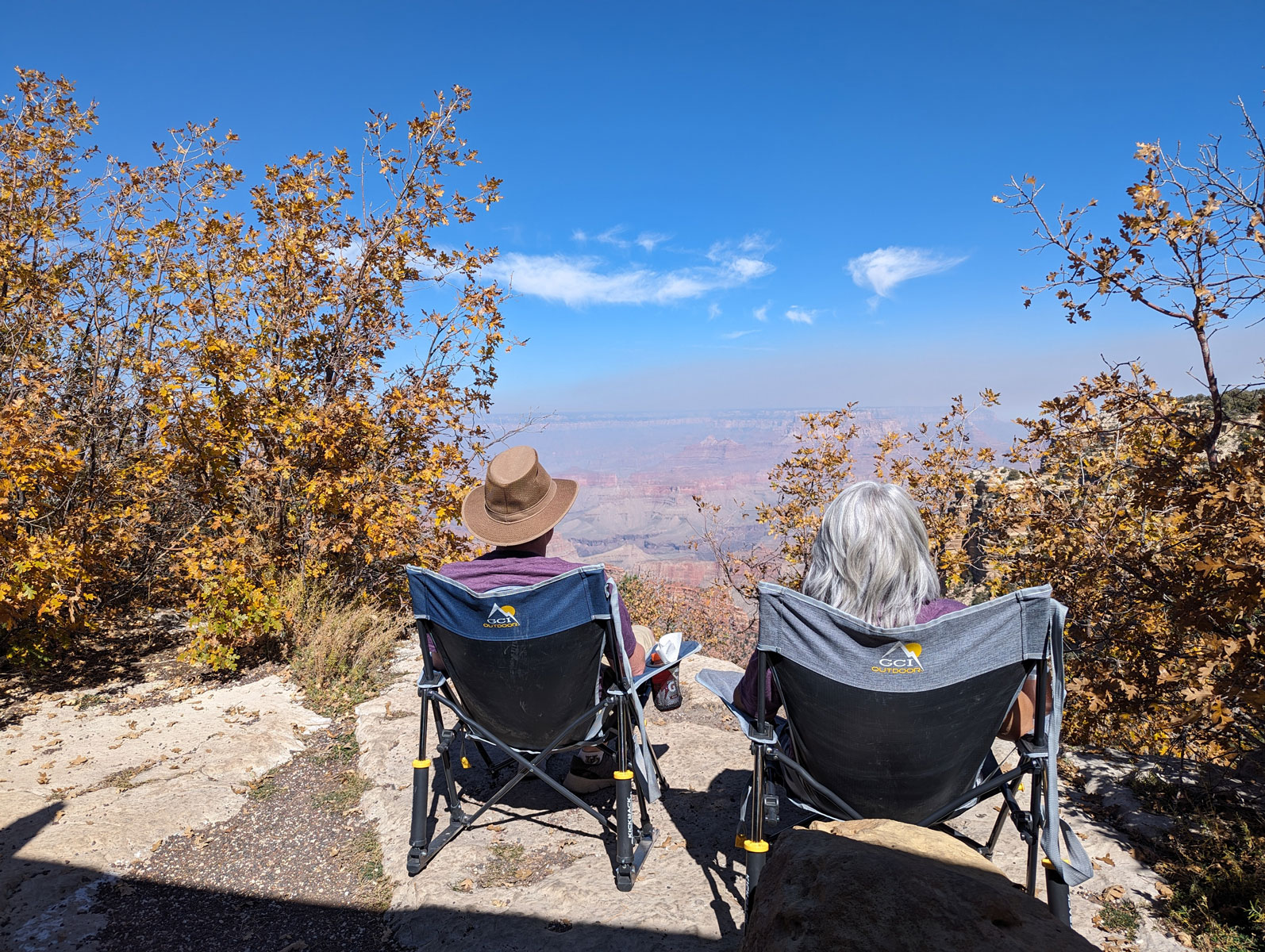
Since we had booked our Rally months before, I had also booked us a night to stay within the Grand Canyon National Park. I got a spot at Mather Campground, a dry-camping area in the heart of the Grand Canyon Village area. While there is a full hookup campground also in that area, for one night, I knew we were self-contained enough to be comfortable, and without the dogs, there was no worry about needing hookups to leave them behind in air conditioning while we went off to tour. You can bring your dogs along many rim trails, but you can’t bring them on the buses, and we were planning on using the buses to make it easier than searching for parking with our LTV. I had picked a campsite in Aspen Loop, right at the front of the campground, as this made it easy to walk to the bus stop to begin our tour.

The bus system is easy to use and convenient to get around the park. We left at the Visitor Center, where Mather Point is. This is one of the most spectacular viewpoints in the park, and it doesn’t disappoint. It was a little hazy this first day due to some fires on the north rim area, but that didn’t take away the sheer majesty of this canyon. Looking down, you realize you could fit thousands of Antelope Canyons just in the view you’re looking at.
We walked a little bit along the Rim trail, which I recommend. Even in mid-October, it was pretty crowded at Mather Point (being the “main” spot), but just a short walk to the west along the rim trail to Yavapai Point and the crowds significantly thin out, allowing a little quiet and solitude as you marvel at the views.
We didn’t feel like doing any serious hikes, so we got back on the bus to what I call “Hotel Row,” as it has a few hotels that perch right on edge. If we ever come here without our LTV, this is where we will stay! While the views here were different from what we saw earlier, they were no less fabulous, and we walked along as the sun set.
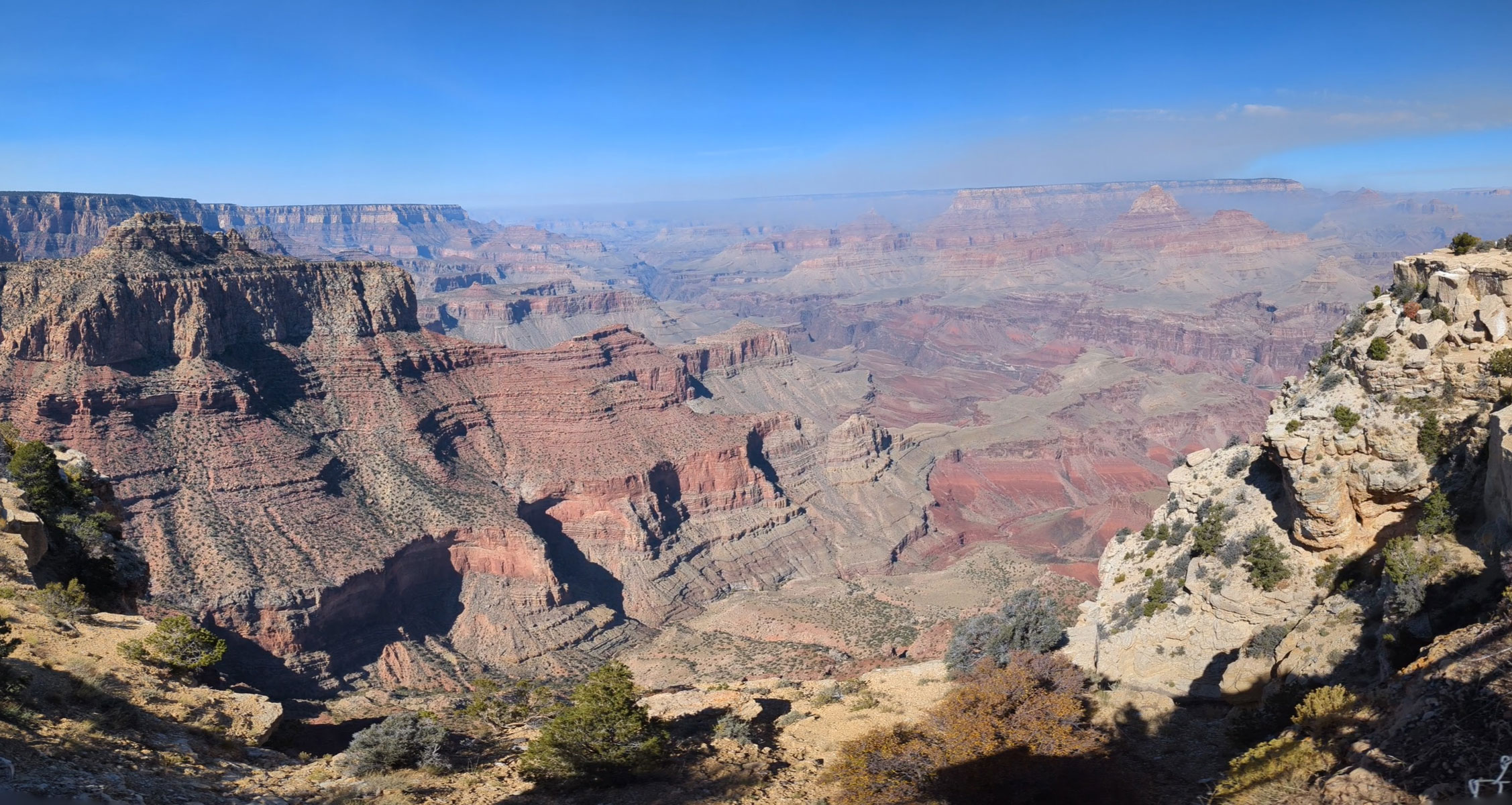
We returned on the bus to the visitor center, where we changed buses for one headed towards the campground. As we were driving, we spotted animals that, at first, we thought were deer right by the side of the road, but then we quickly realized they were elk. Now, we have deer where we live but don’t have elk, so that was a sight to see. We were bummed it was just a glance, so imagine our glee when we got to our campsite bus stop to see a bunch of elk just roaming around. You could get quite close to them (but we didn’t get too close). Some of the elk even walked up to the RV dump station. They’re used to being around people, paying us no mind. Similar to the bison we saw on our last trip to Yellowstone.
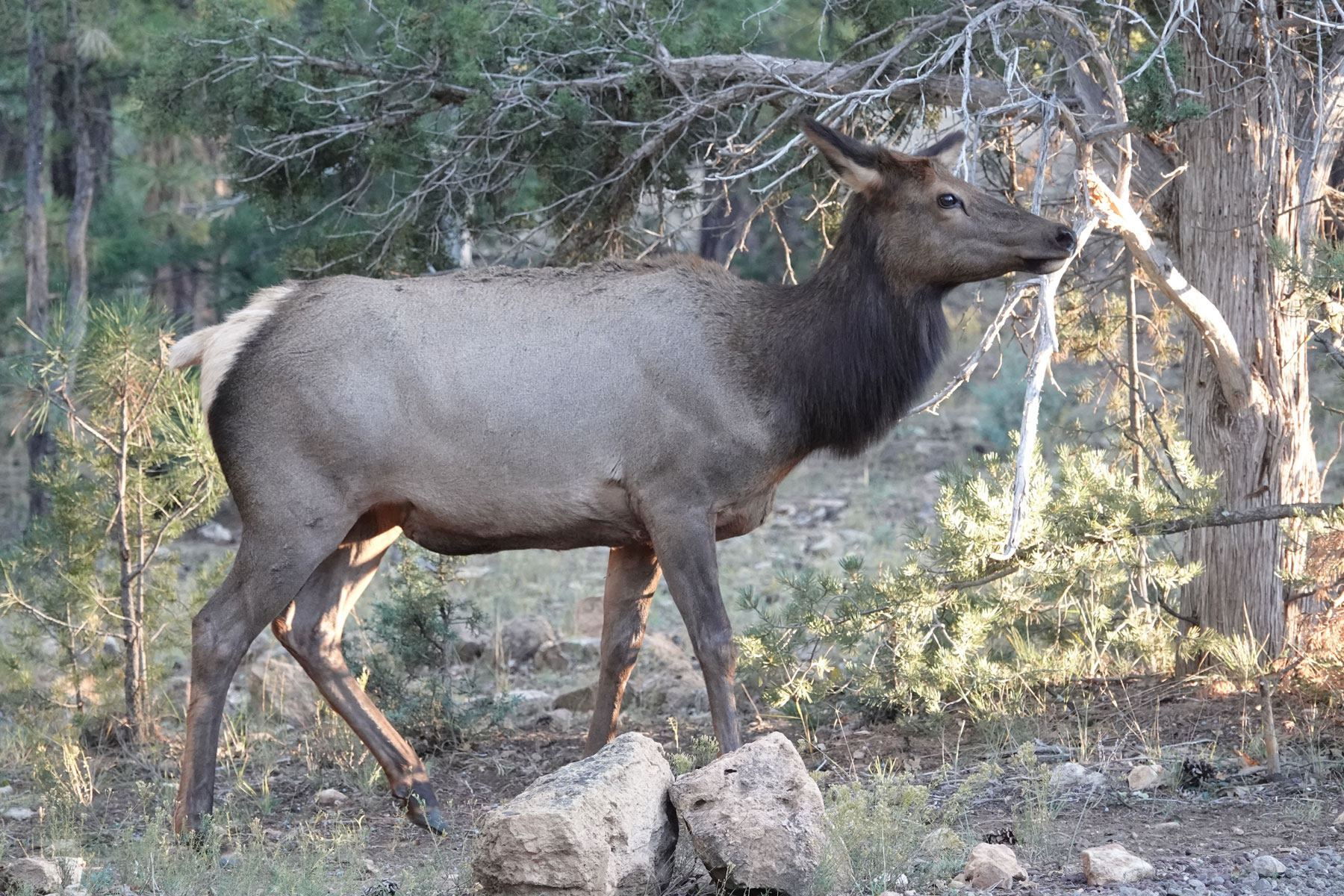
The next morning, we drove up to the visitor center for one more view of the Canyon and then headed out the south entrance to begin our journey home. While not as much haze, there was mist in the canyon, giving us one more amazing view.
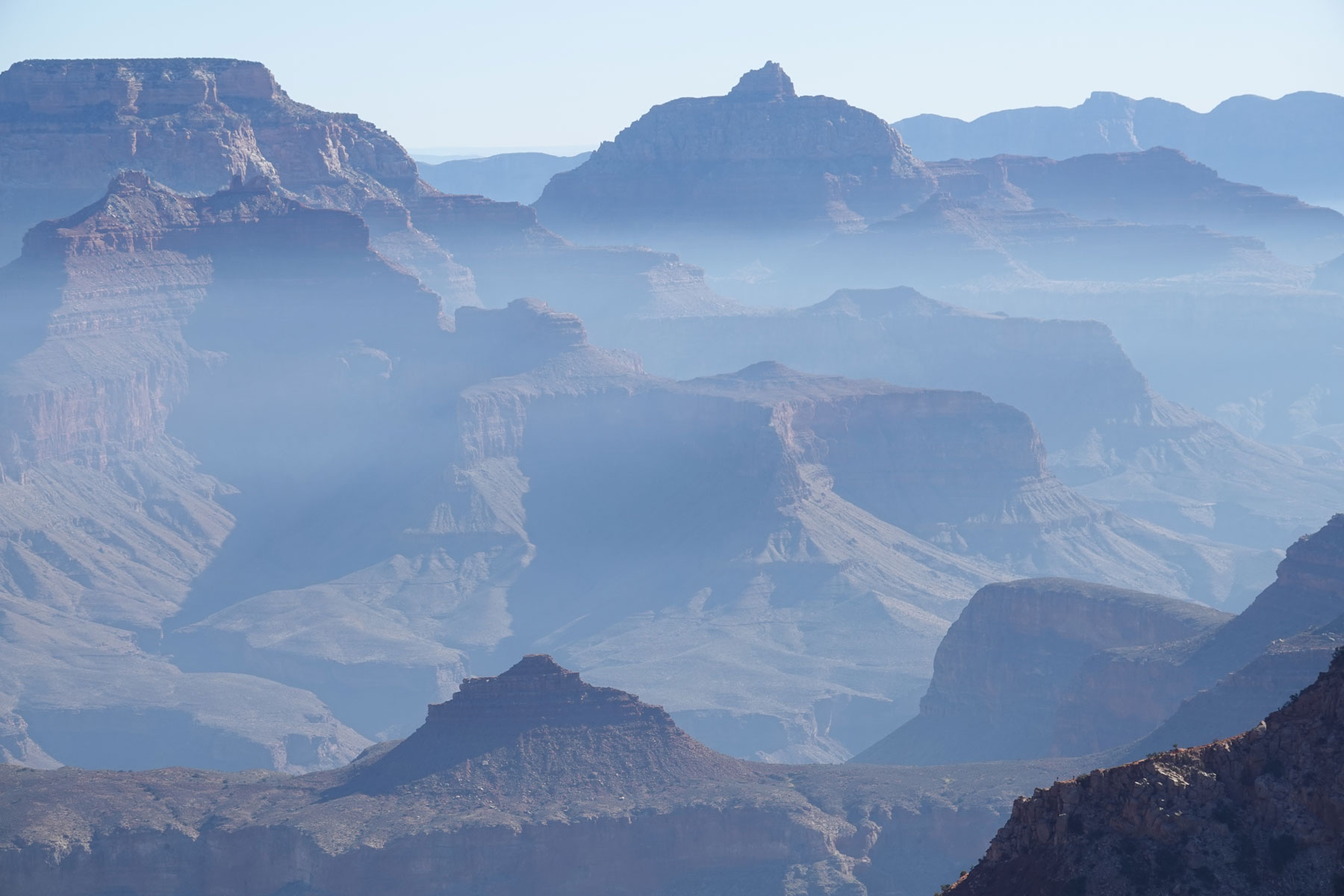
Epilogue
This trip truly was a study in contrast to two types of canyons. The slot canyon of Antelope Canyon is a beauty that can only be appreciated up close. You can stand in this narrow slice of rock and feel it all around you. The Grand Canyon is the opposite (at least our views), as you are thousands of feet up, looking across miles and miles of jaw-dropping scenery. Yet, while very different, they are both must-see sights in your lifetime. If you haven’t been there already, we hope you plan a trip in your LTV to see these natural wonders.


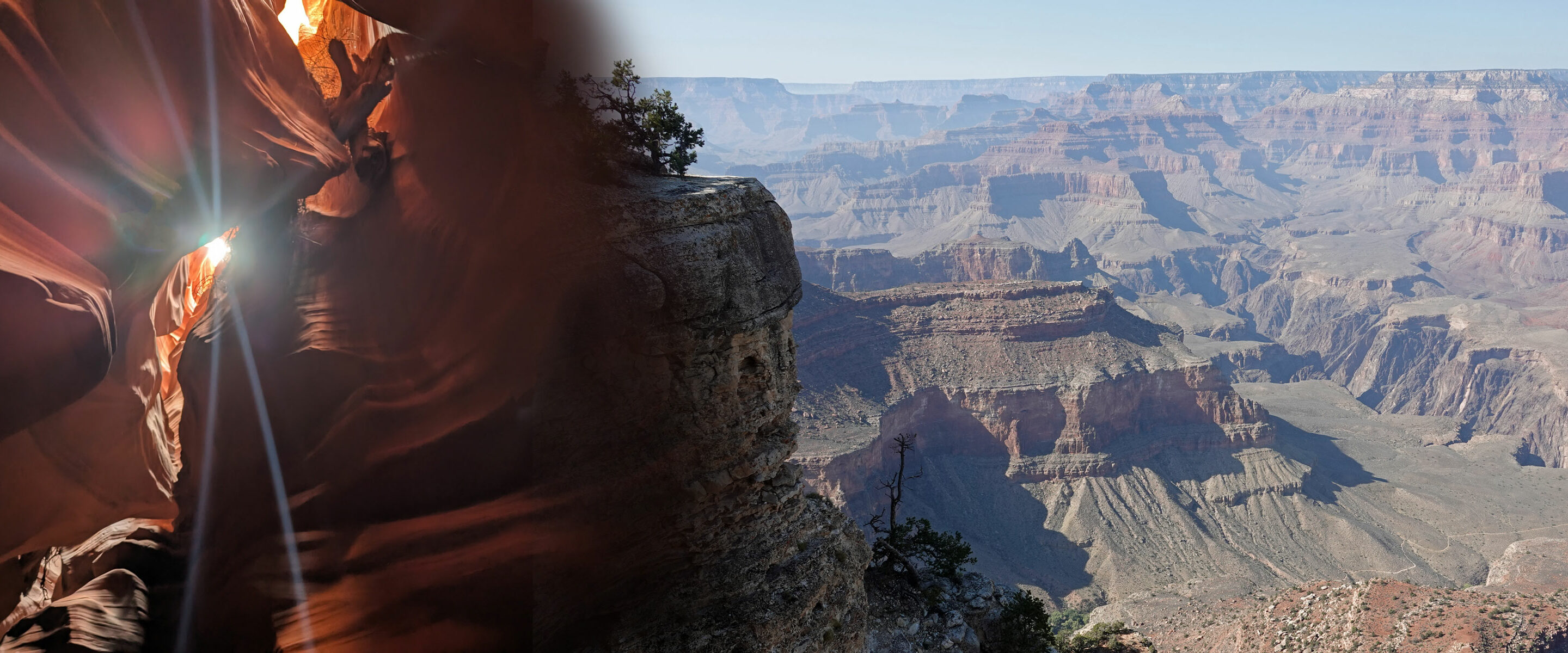
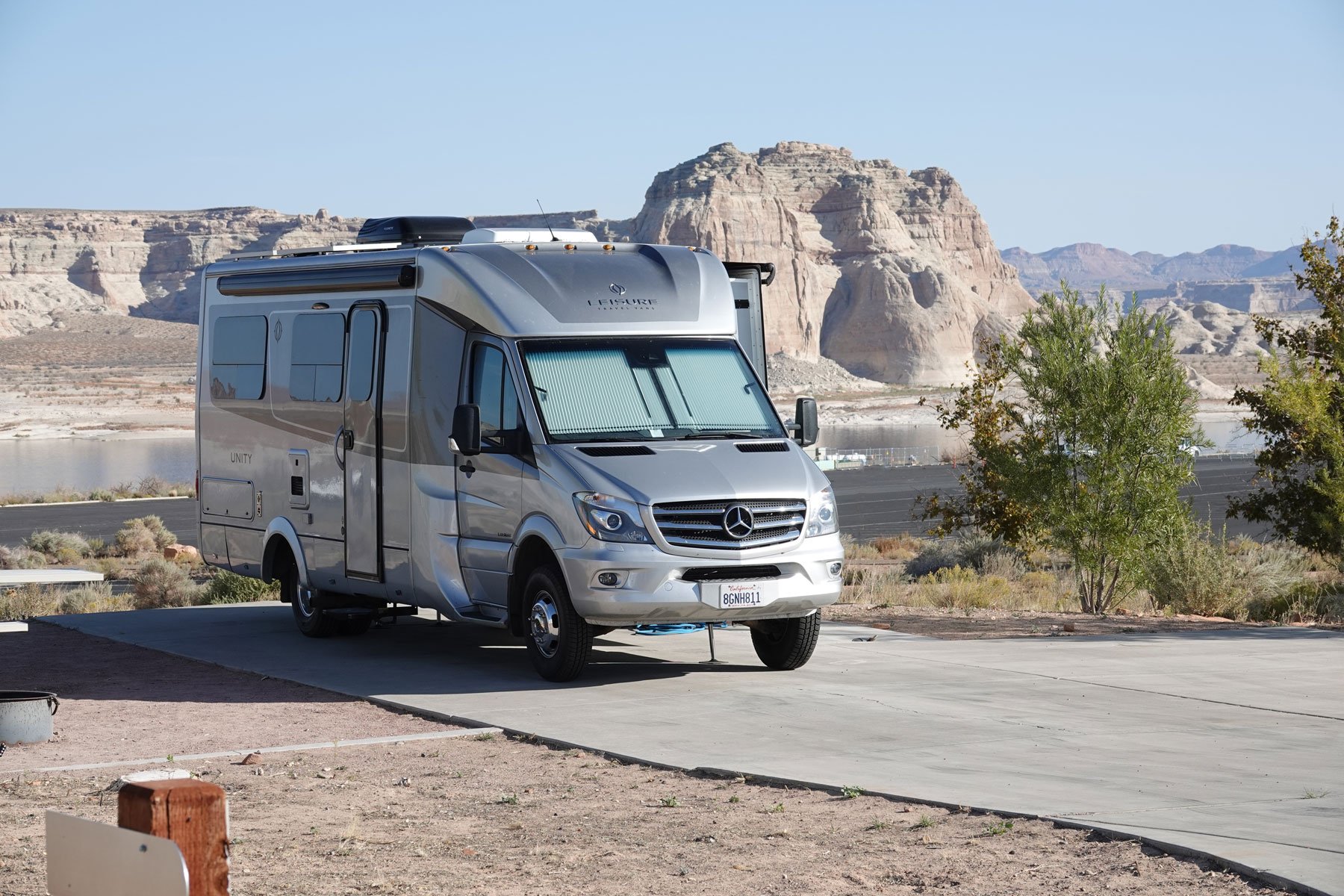

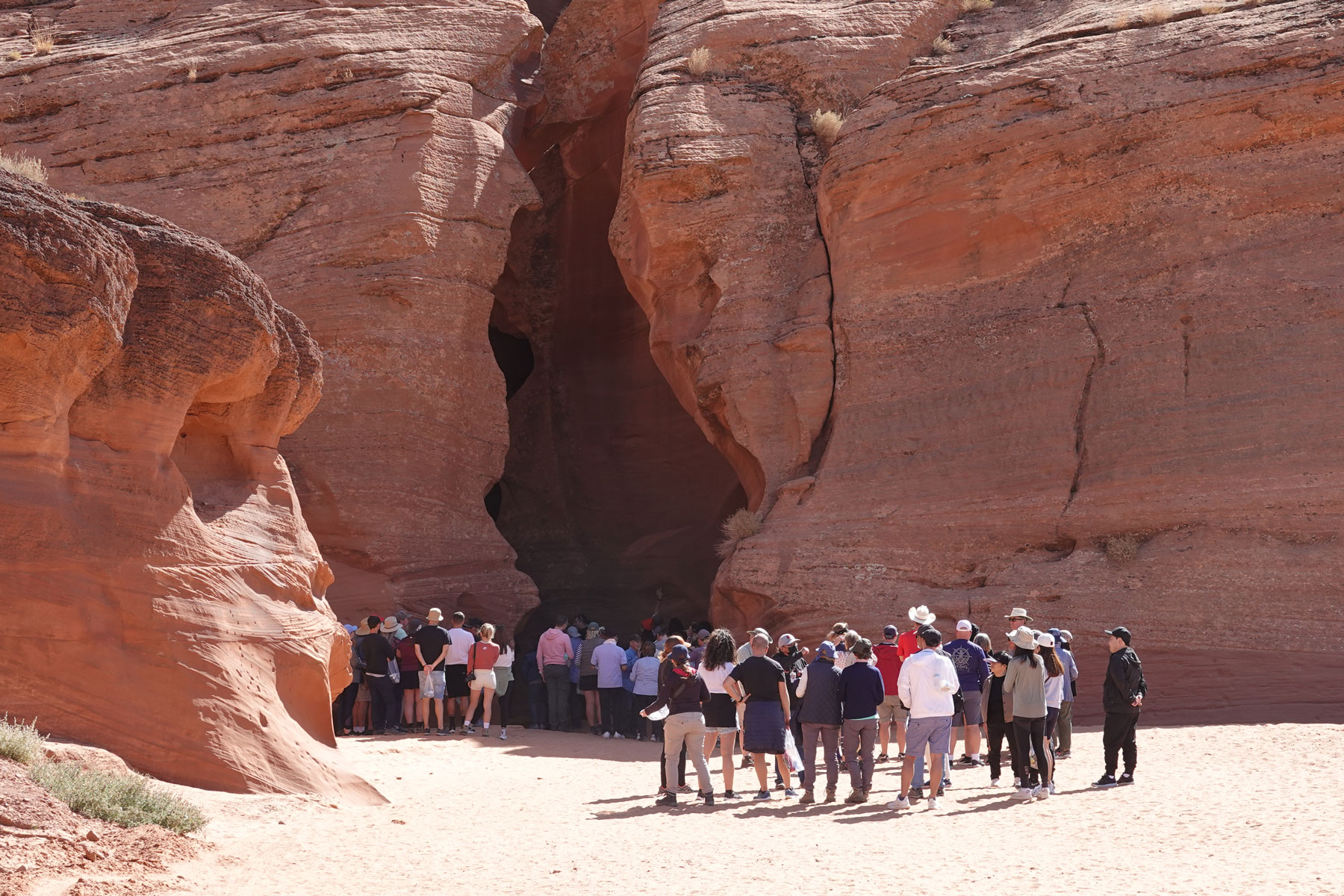
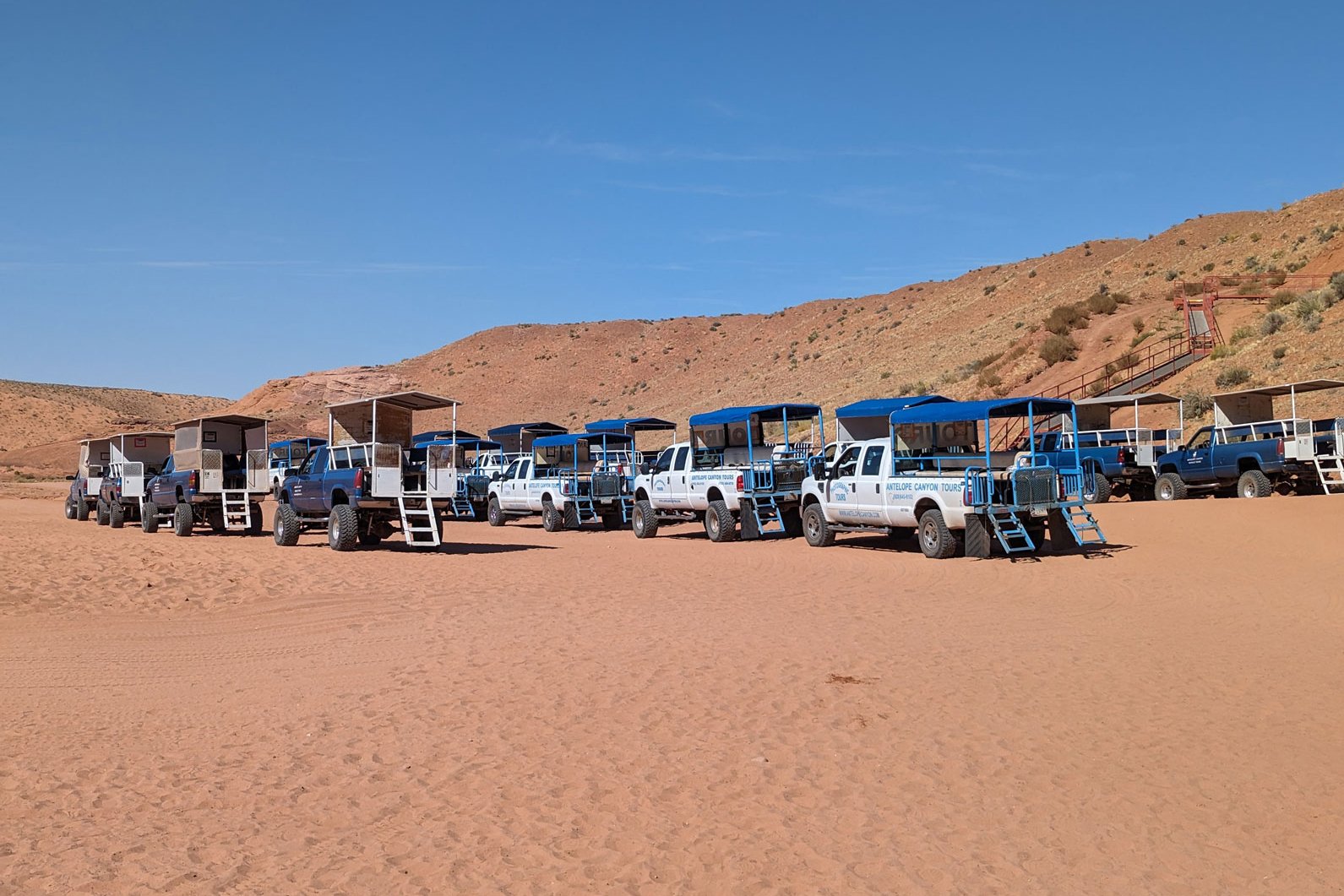
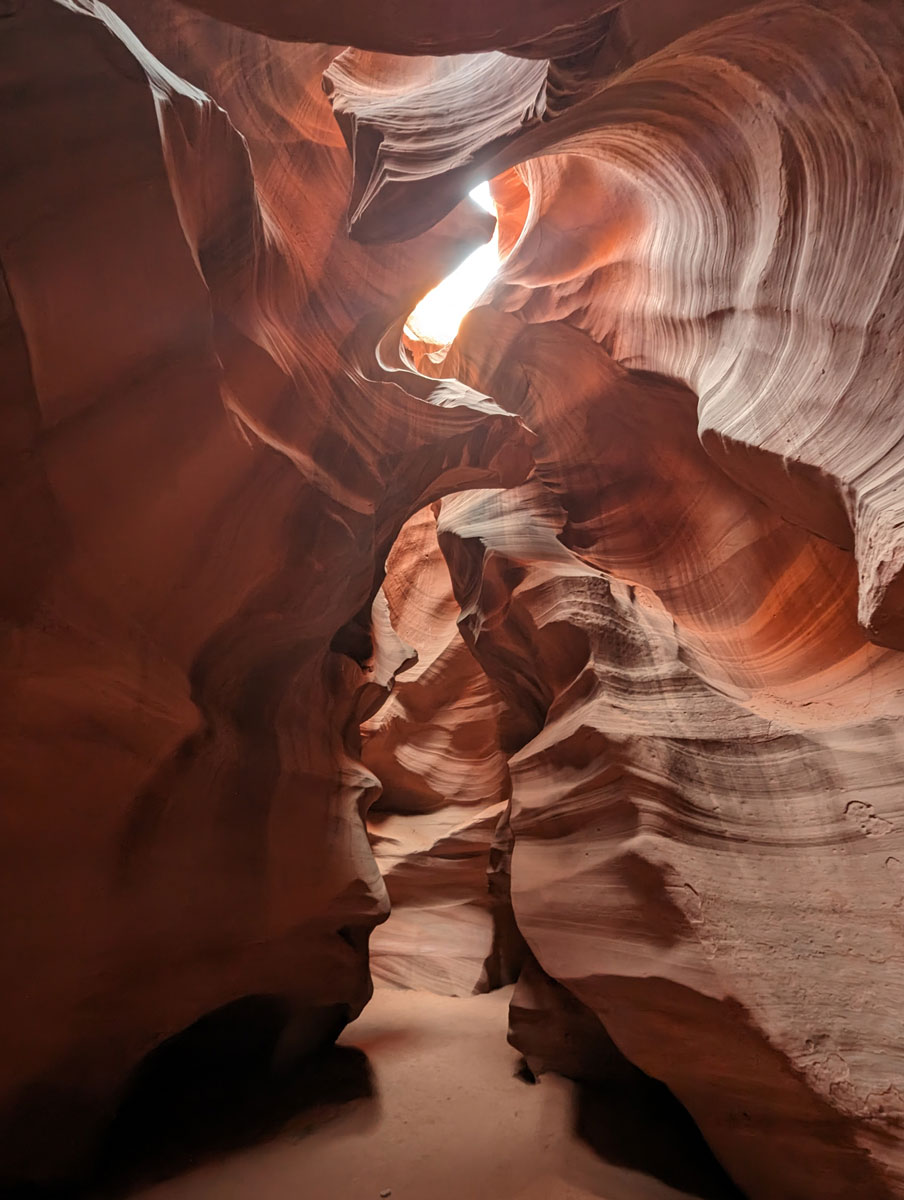
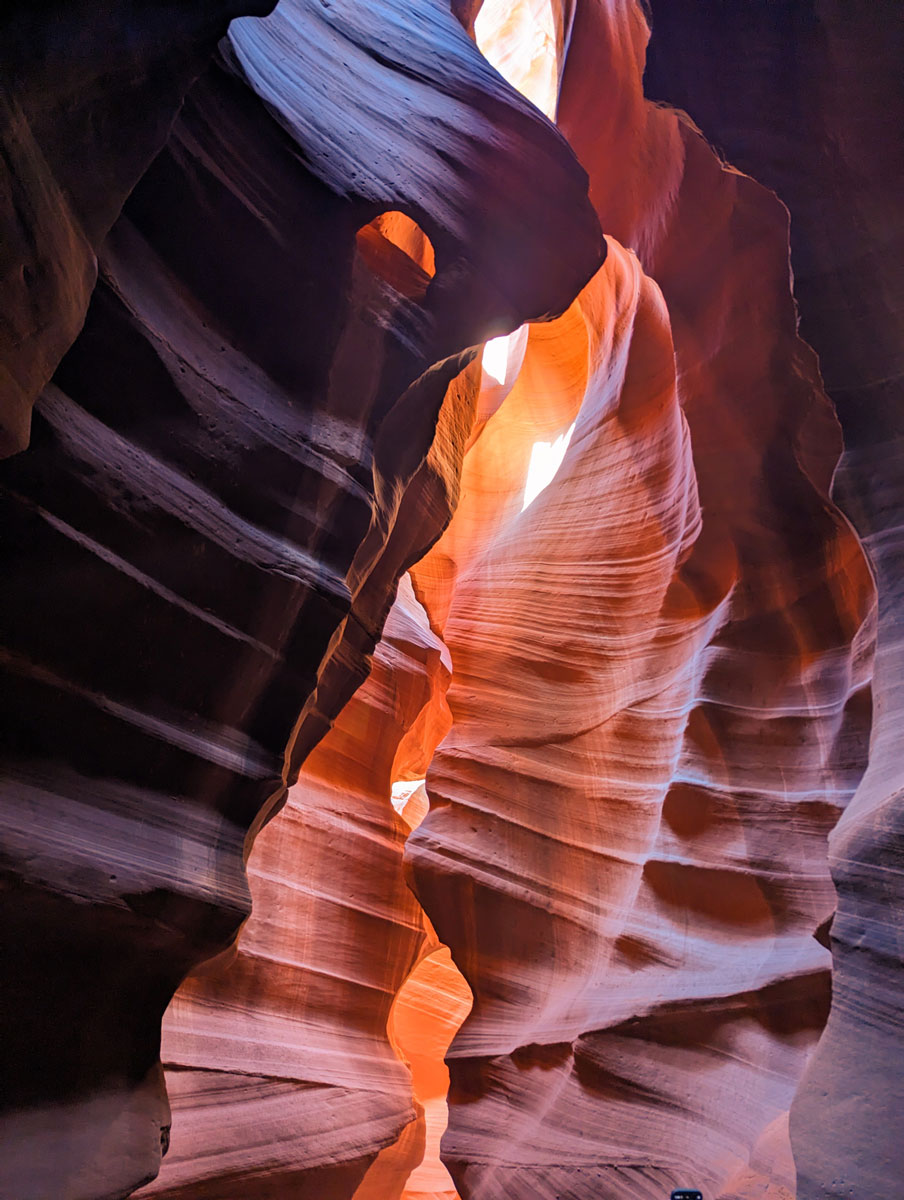
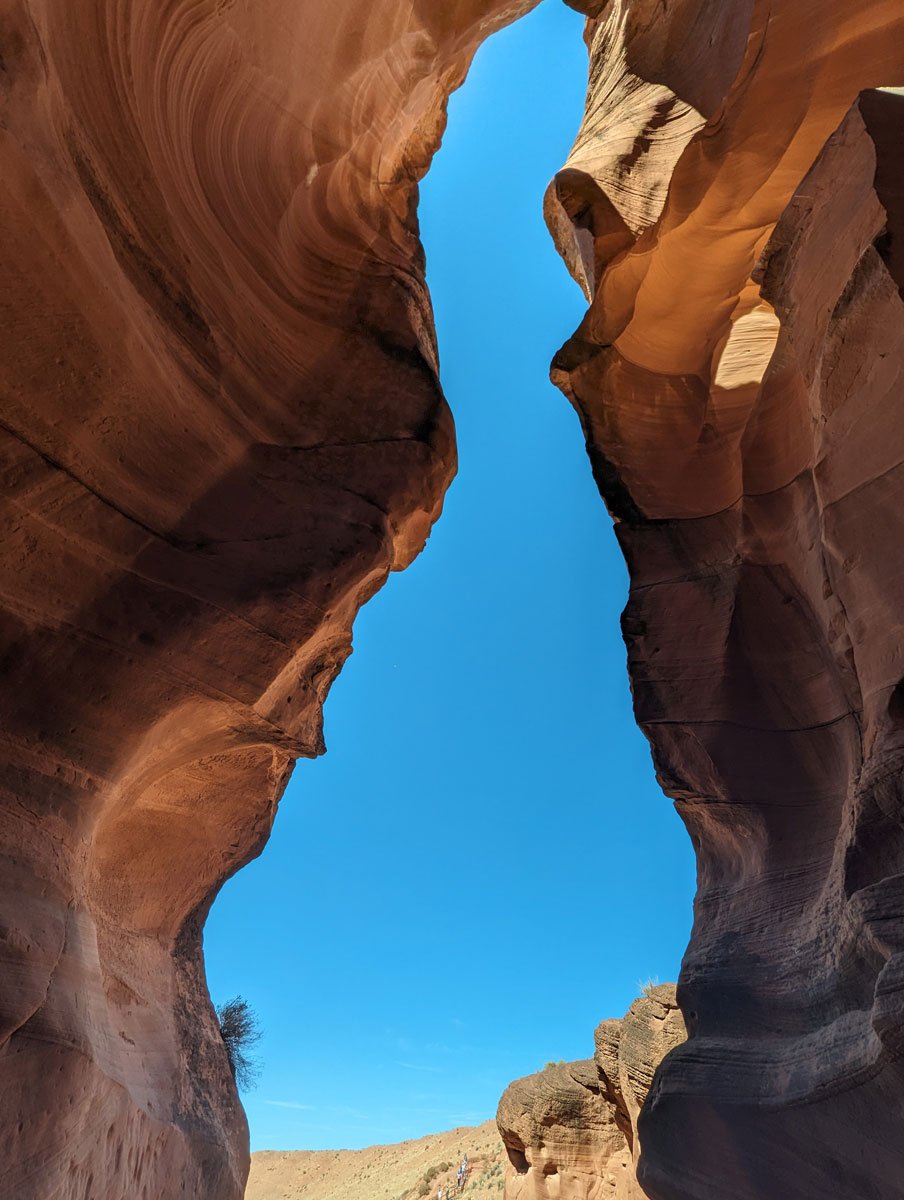
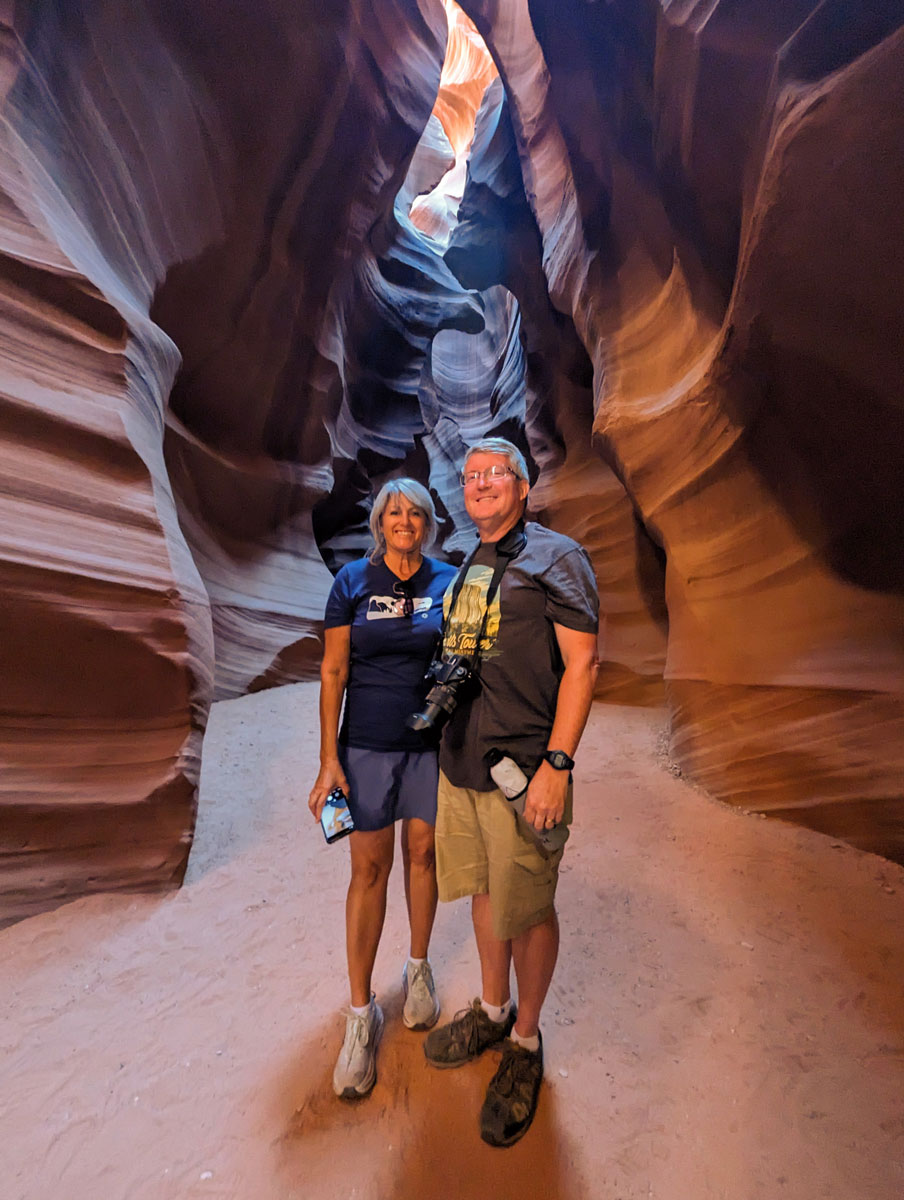
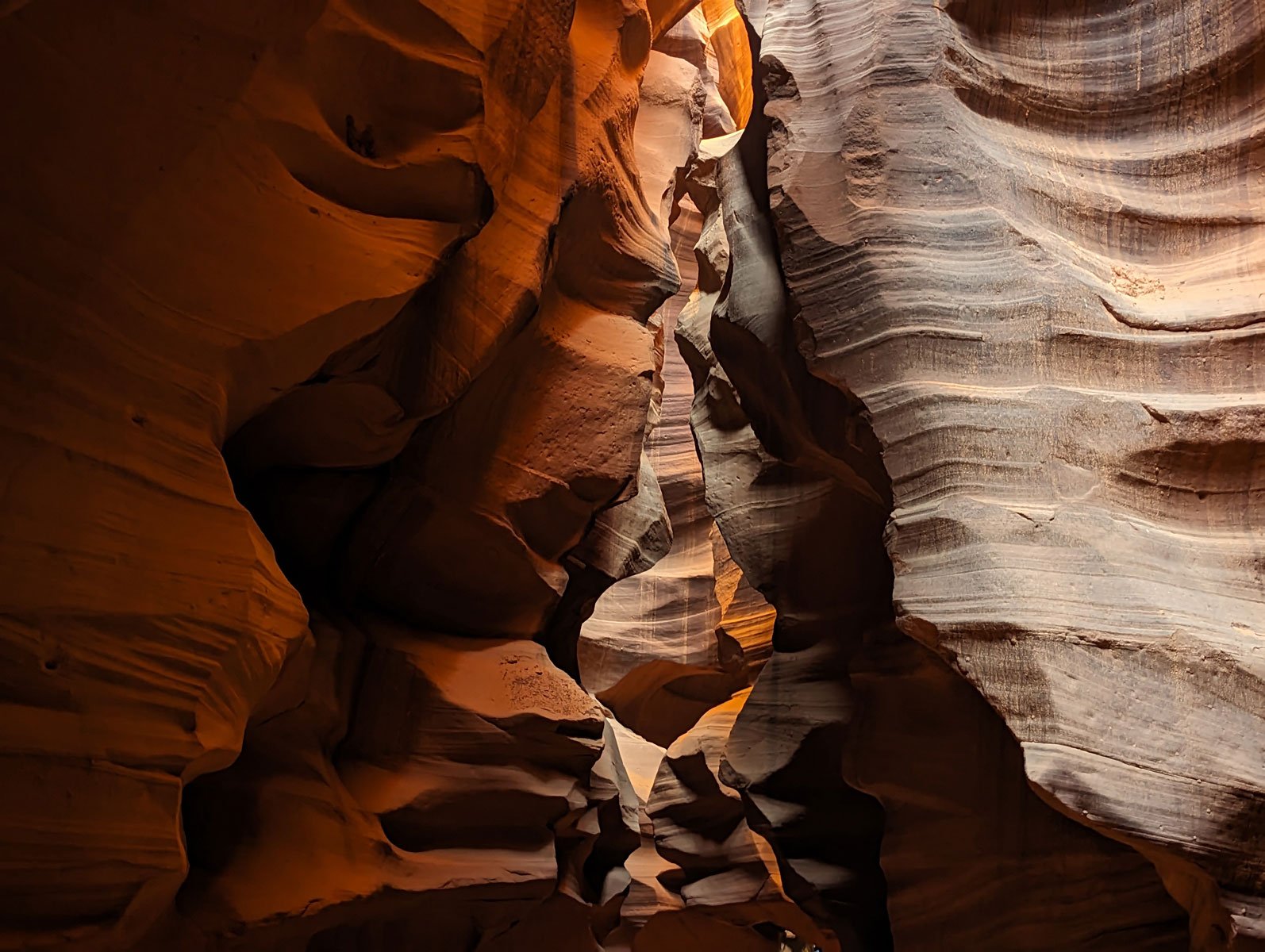
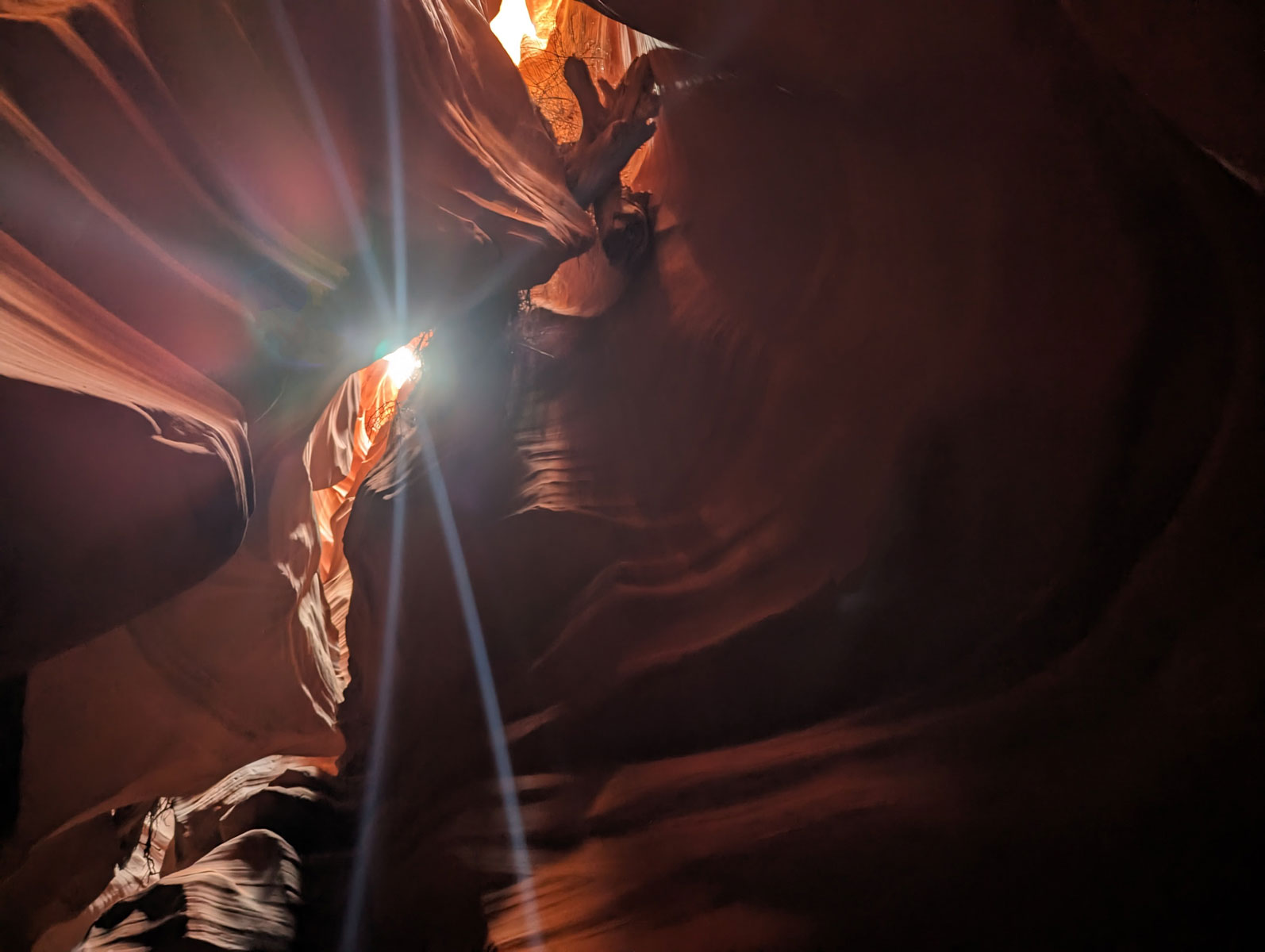
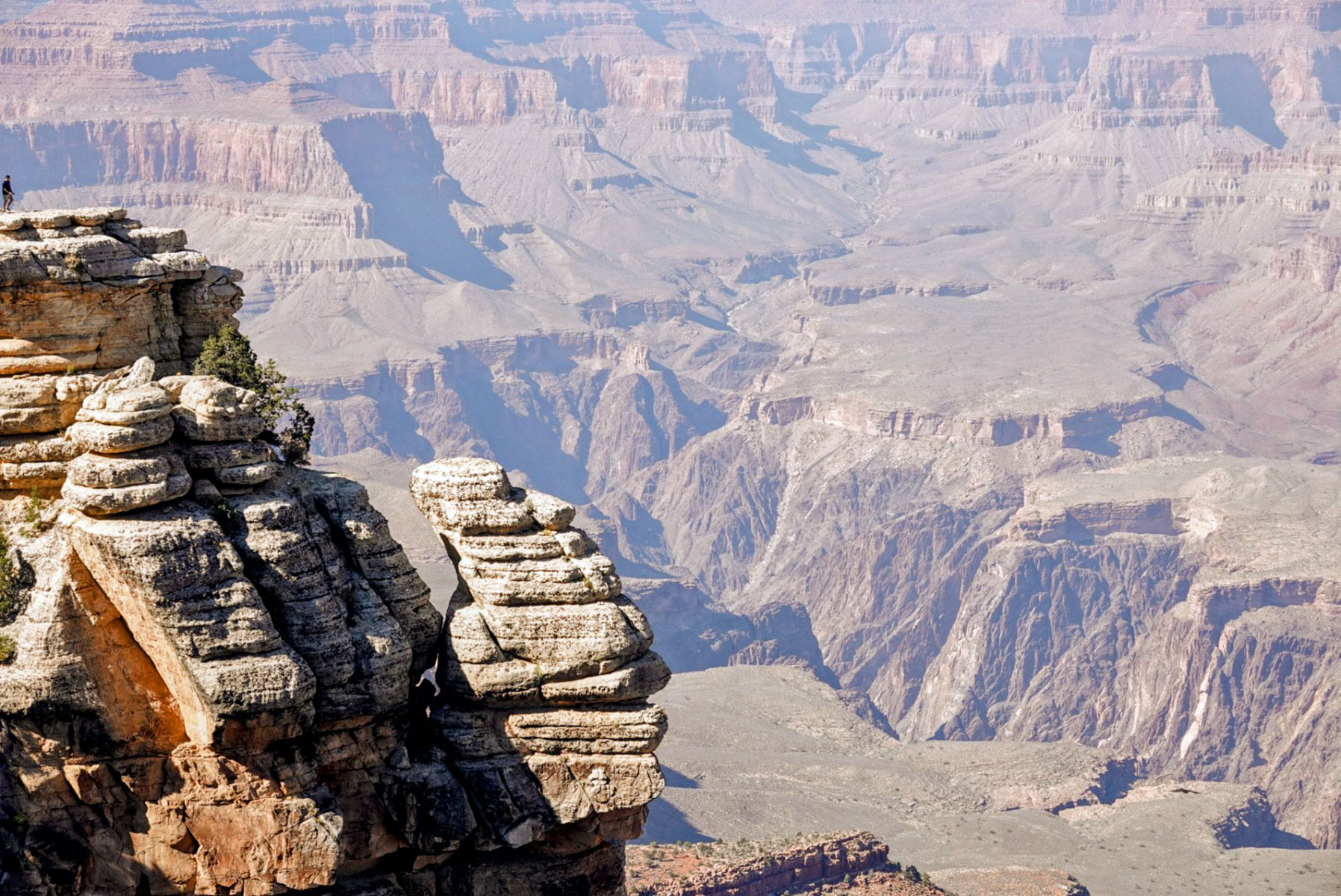
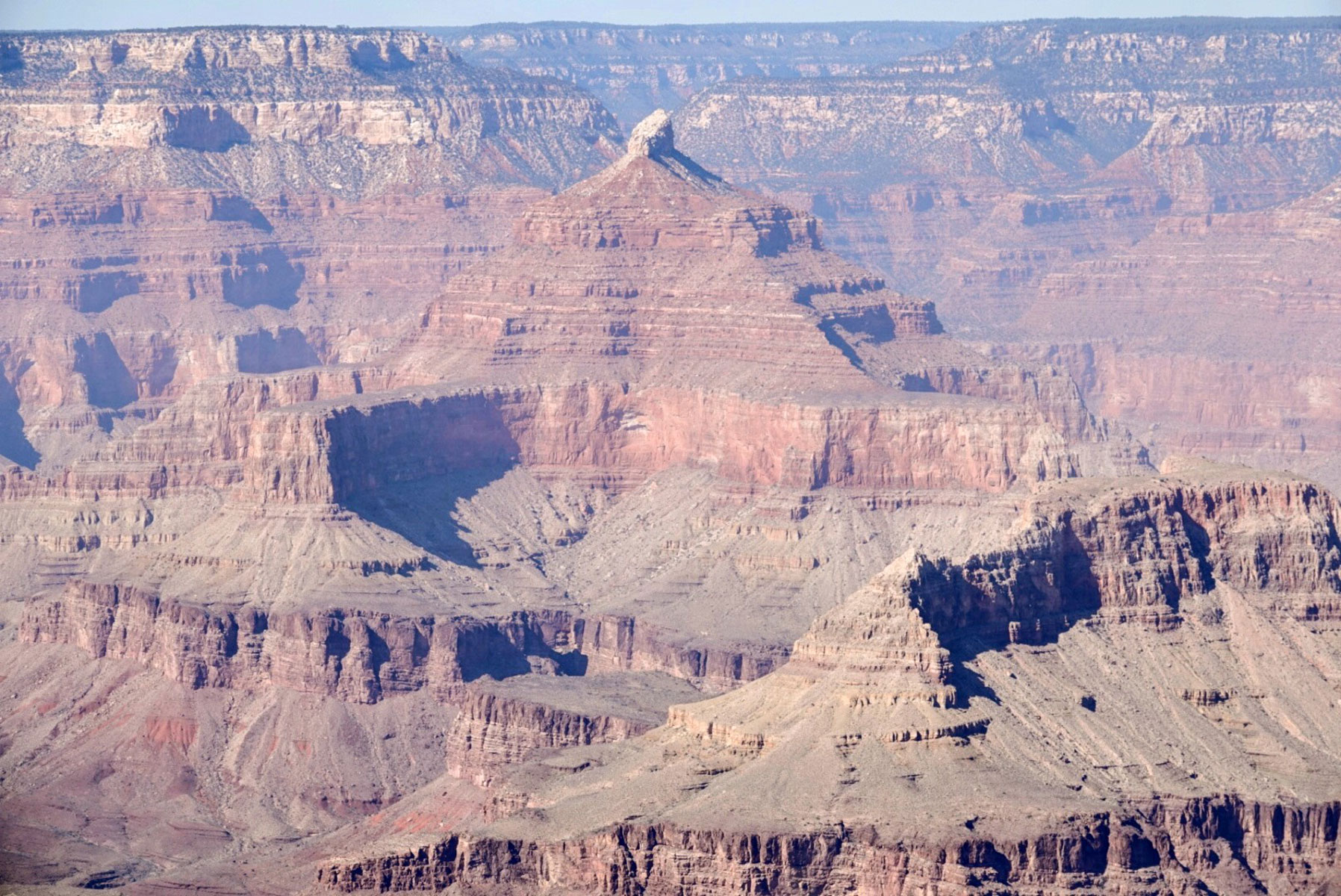
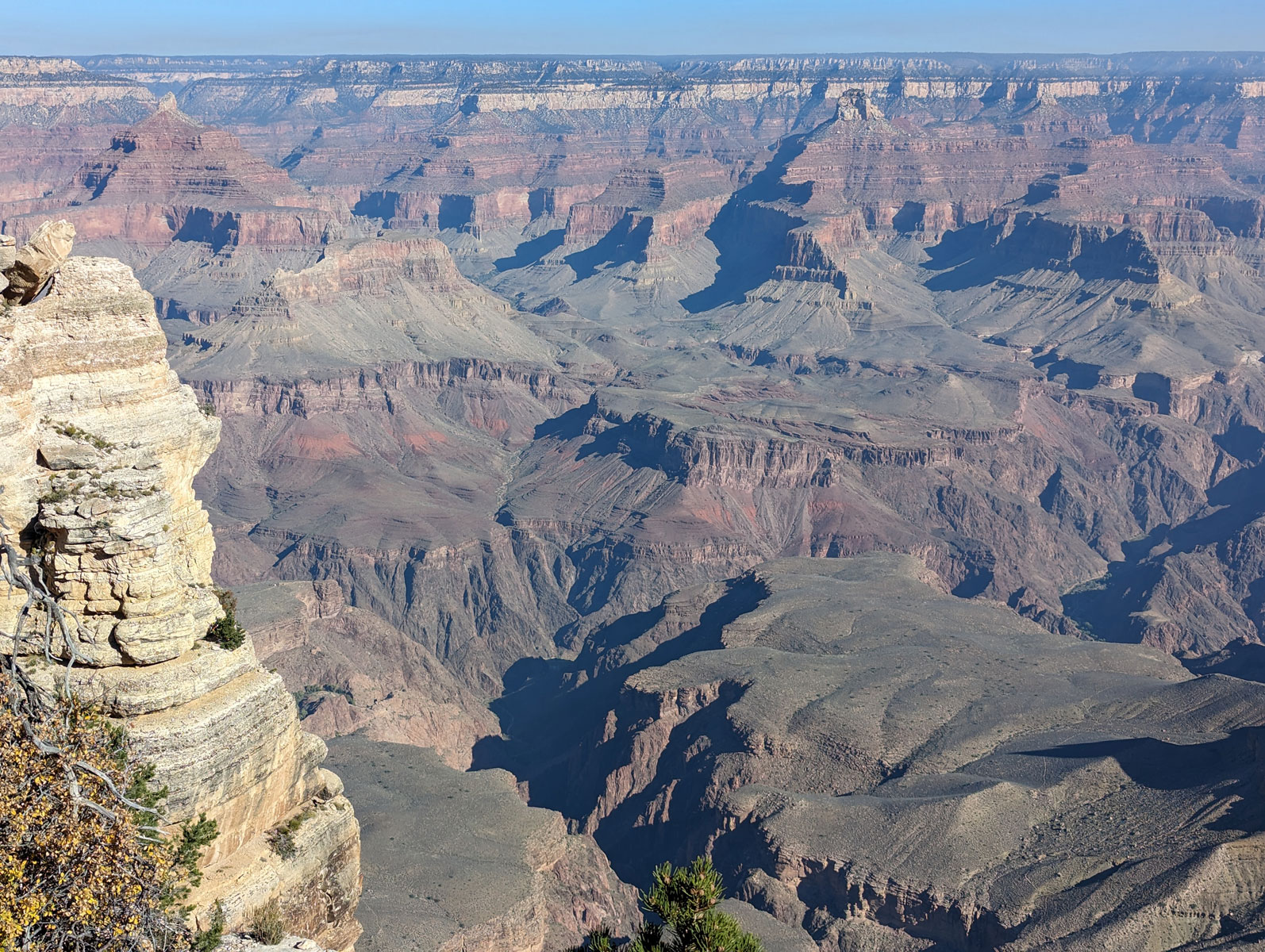
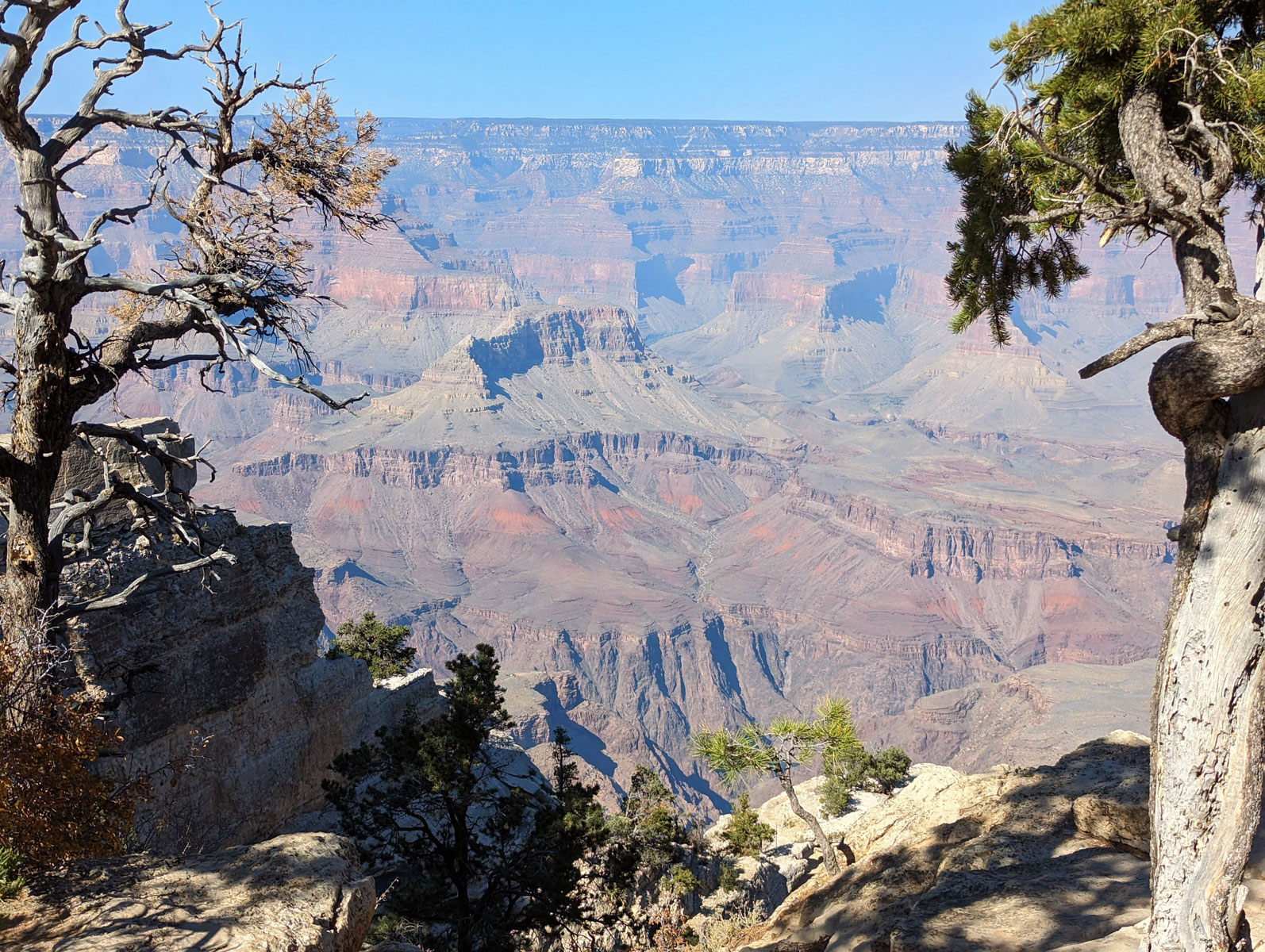


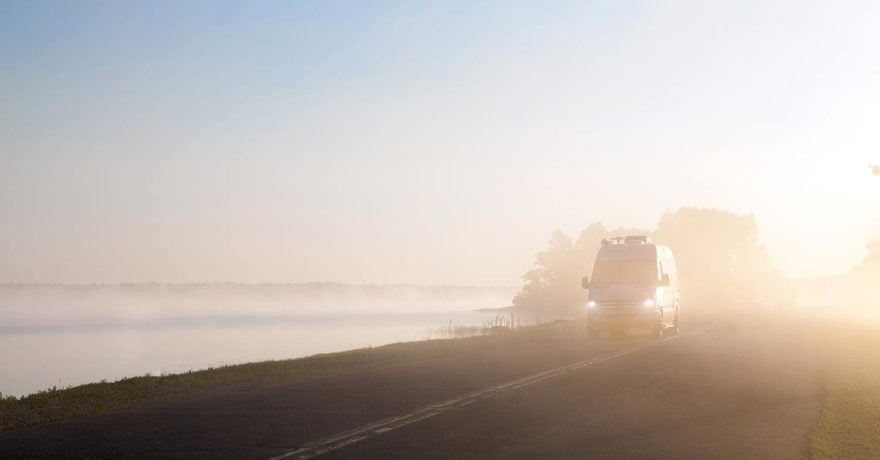
Comments